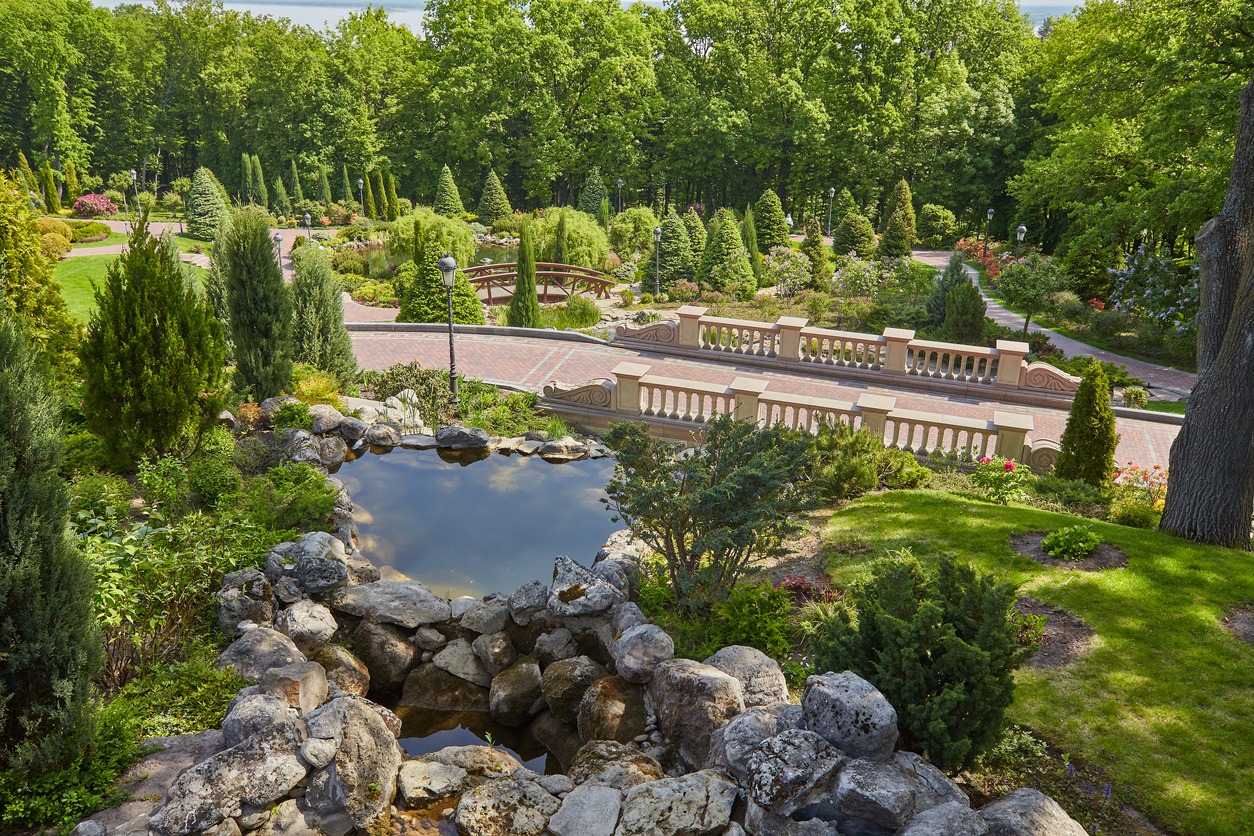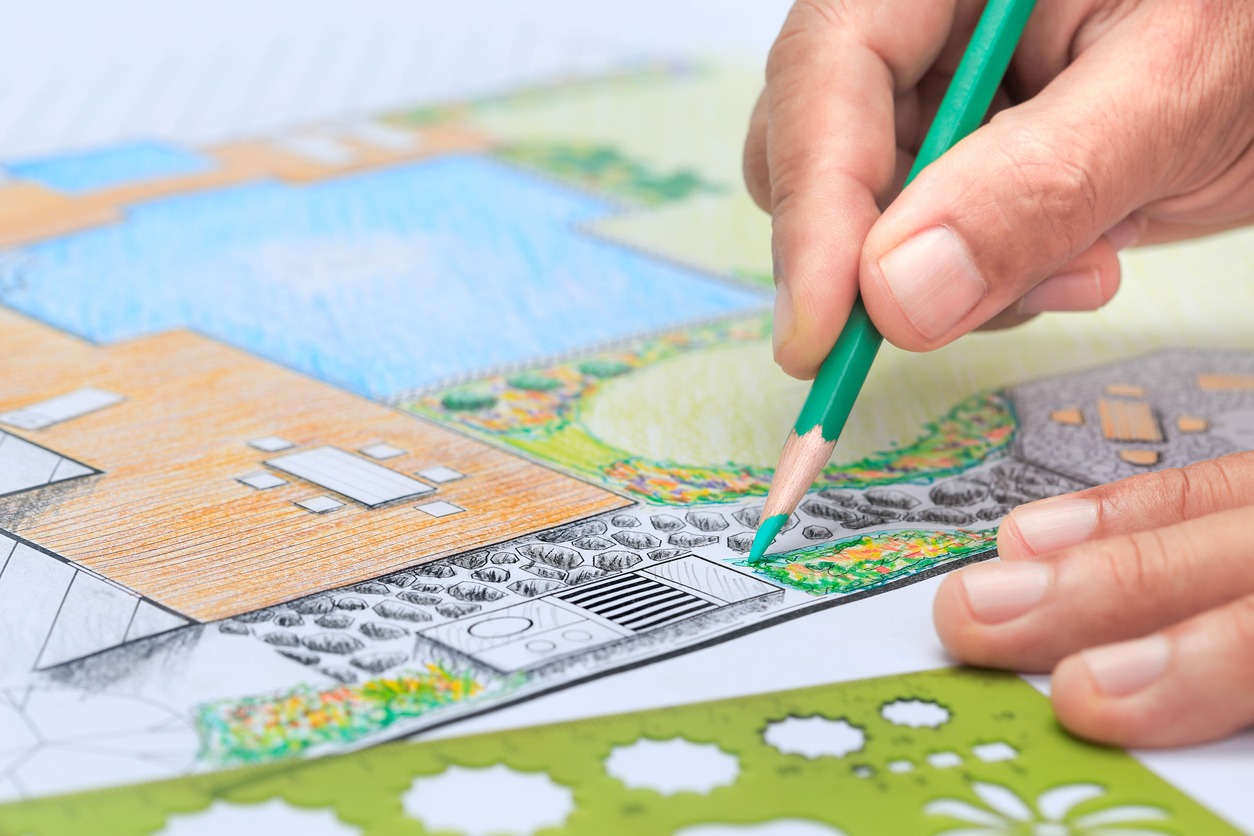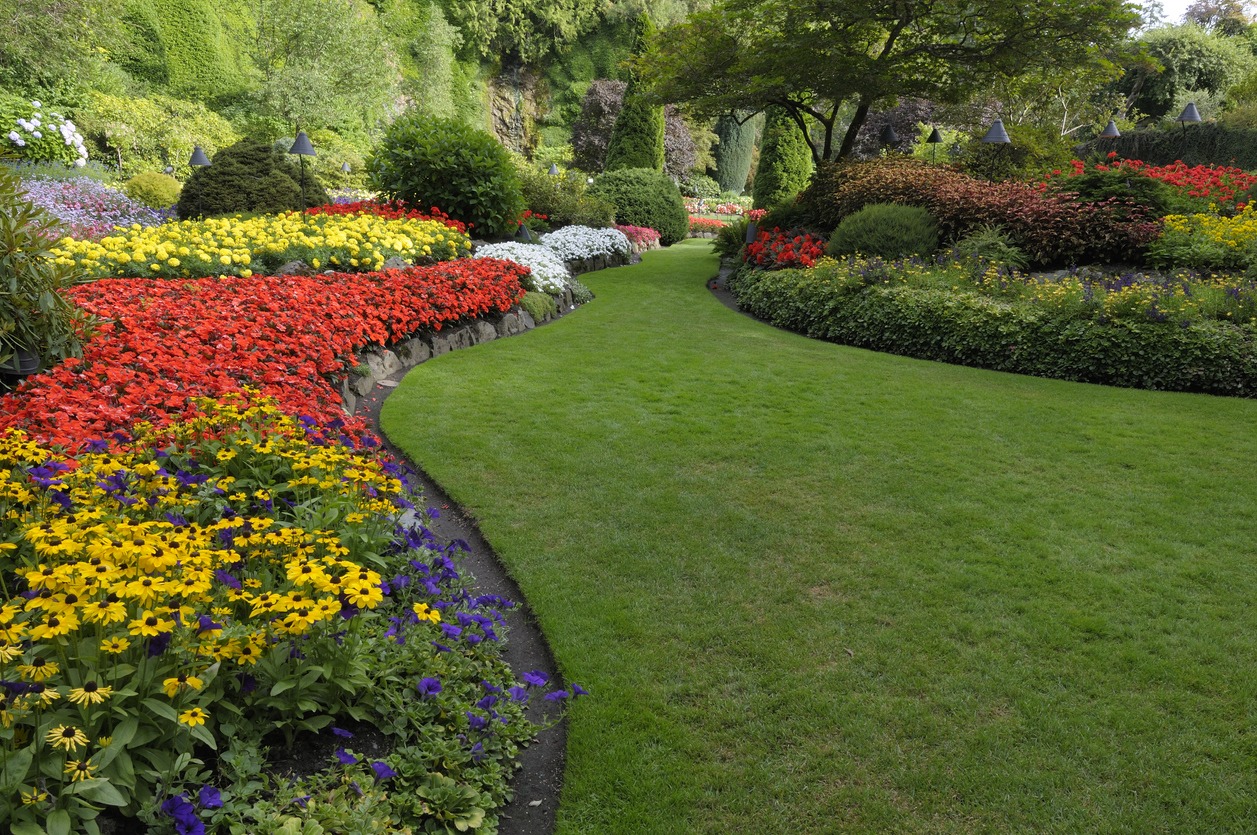Landscape architecture is more than just designing outdoor spaces; it is about creating environments that reflect our culture, nurture our well-being, and respect the natural world. This field combines elements of art, science, and environmental stewardship to design and manage not only gardens and parks but also entire urban landscapes, historic landmarks, and infrastructure.
The history of landscape architecture is as old as civilization itself, though it only emerged as a distinct professional field in the 19th century. Today, landscape architects are at the forefront of designing spaces that are aesthetically pleasing, functional, and sustainable, playing a critical role in how urban and rural environments evolve.
In this article, we will delve into the fascinating world of landscape architecture. We will explore its principles, the design process, and the impact of this field on our everyday lives. From the iconic High Line Park in New York City to the innovative Gardens by the Bay in Singapore, we will also look at how these designs shape our experiences and interactions within these spaces.
What is Landscape Architecture?
Landscape Architecture is a comprehensive discipline that encompasses the design, planning, and management of land and outdoor spaces through the use of aesthetic and scientific principles. It is a profession dedicated to creating, improving, and protecting outdoor environments, both natural and built. Landscape architects work on a diverse range of projects that include public parks, gardens, playgrounds, residential areas, college campuses, commercial developments, and urban plazas, as well as larger regional and environmental areas.
The core of landscape architecture involves the artful arrangement and modification of outdoor spaces for human enjoyment and environmental sustainability. This includes the thoughtful integration of natural elements like plants, water, and rocks with constructed elements such as walkways, furniture, lighting, and architectural features. The aim is to create harmonious, functional, and aesthetically pleasing areas that enhance quality of life and contribute to environmental health.
Landscape architects need a deep understanding of ecology, climate, soil science, and horticulture, as well as expertise in design and the arts. They must also be knowledgeable about environmental regulations and building codes. Their work often requires collaboration with other professionals, including architects, engineers, and urban planners, to create cohesive and sustainable environments.
In essence, landscape architecture is not just about designing attractive outdoor spaces; it’s about creating environments that are sustainable, functional, and in harmony with the natural ecosystem. It plays a critical role in shaping the physical layout of our communities and influencing how we interact with our natural and built environments. In addition to learning about Architecture, discover Bronxville’s Architectural Wonderland. Visit Uncovering Bronxville, NY – A Hidden Gem in the Heart of Westchester. Explore more architectural designs in NYC suburban homes. Visit What Defines the Architectural Styles of Suburban Homes in NYC? Discover about the Elegance of Ancient Temples. Visit The Timeless Elegance of Greek Columns in Ancient Temples
History and Evolution
The historical context and evolution of landscape architecture is a fascinating journey that reflects changes in societal values, technological advancements, and environmental awareness. Tracing its roots back to ancient times, the field has evolved significantly, shaping the way we interact with our outdoor environments.
Ancient Beginnings:
The earliest forms of landscape architecture can be seen in ancient civilizations like Egypt, Persia, Greece, and Rome. These societies created elaborate gardens and outdoor spaces that served both aesthetic and functional purposes, such as the Hanging Gardens of Babylon and the landscaped estates of Roman villas.
Medieval and Renaissance Periods:
During the Medieval period, gardens were primarily utilitarian, providing herbs, vegetables, and fruits. The Renaissance revived interest in artistic and aesthetic landscape design, particularly in Italy and France. This era saw the creation of ornate and geometric gardens, exemplified by the Gardens of Versailles, which reflected the power and order of the monarchy.
18th and 19th Centuries:
The 18th century brought the English landscape garden, characterized by a more naturalistic style, as seen in the work of designers like Capability Brown. These gardens were designed to mimic natural landscapes, with rolling hills, meandering streams, and picturesque vistas.
The 19th century witnessed the birth of landscape architecture as a formal profession, largely credited to Frederick Law Olmsted in the United States. Olmsted, known for designing Central Park in New York City and the Emerald Necklace in Boston, is often considered the father of American landscape architecture. His work emphasized natural beauty, public access, and social cohesion.
20th Century to Present:
The 20th century saw landscape architecture evolve with the Modernist movement. Designers like Ian McHarg introduced ecological sensitivity into landscape design, emphasizing the importance of environmental planning and sustainability.
The latter part of the 20th century and the early 21st century have focused increasingly on sustainable and ecological design. This includes the integration of green infrastructure, the creation of urban green spaces, and the development of landscapes that mitigate environmental issues such as urban heat islands and stormwater runoff.
Impact of Technology and Globalization:
Technological advancements, including computer-aided design (CAD) and geographic information systems (GIS), have transformed the tools and methods used in landscape architecture.
Globalization has led to a cross-pollination of styles and ideas, with landscape architects working in diverse cultural and environmental contexts around the world. Explore the evolution of architecture from the age-old art of manual drafting to the modern marvels of digital design. Dive into our latest post to see how technology is reshaping the world of architecture and pushing the boundaries of what’s possible in building design.
Contemporary Focus:
Today, landscape architecture encompasses a broad range of projects from urban plazas to national parks. There is a strong emphasis on sustainable, functional, and community-centric designs that address current challenges like climate change, urbanization, and social inequality.
The profession continues to adapt, with a growing focus on creating resilient landscapes that can adapt to changing environmental conditions and serve the needs of diverse populations.
Significance of Landscape Architecture
Landscape architecture plays a crucial role in shaping public spaces, significantly impacting the environmental, social, and aesthetic quality of our communities. Its significance can be understood through several key aspects:
- Environmental Sustainability: Landscape architects design with a focus on sustainability, aiming to create spaces that are environmentally responsible and resource-efficient. This includes the use of native plantings, sustainable water management practices like rain gardens and bioswales, and the integration of green infrastructure. These practices help in conserving resources, reducing pollution, and enhancing biodiversity.
- Social Interaction and Community Well-being: Public spaces designed by landscape architects often become focal points for community interaction and social activities. Parks, plazas, and playgrounds are not just recreational areas; they are vital spaces for community engagement, cultural events, and fostering social connections. Good design can promote inclusivity and accessibility for all members of the community.
- Aesthetic Enhancement: The aesthetic aspect of landscape architecture contributes significantly to the visual appeal of a space. Thoughtfully designed landscapes add beauty and character to urban and rural areas, which can enhance the mental and emotional well-being of residents and visitors. Aesthetic considerations also play a role in property values and can influence economic investment in an area.
- Health and Recreation: Public spaces designed by landscape architects provide opportunities for physical activity and recreation, which are essential for public health. Green spaces like parks and trails encourage people to engage in physical exercise, reduce stress, and connect with nature, leading to improved overall health and quality of life.
- Urban Planning and Infrastructure: In urban environments, landscape architects collaborate with urban planners, architects, and engineers to create cohesive and functional urban spaces. This includes the integration of green spaces in urban planning, designing pedestrian-friendly areas, and contributing to urban transportation systems through the design of streetscapes and public transit areas.
- Historical and Cultural Preservation: Landscape architecture often involves the preservation and enhancement of historical sites and cultural landscapes. By respecting the historical context and cultural significance of a space, landscape architects help in preserving the heritage and story of a place for future generations.
- Climate Adaptation and Resilience: As climate change impacts become more pronounced, landscape architects play a vital role in designing spaces that are resilient to environmental challenges like flooding, heatwaves, and sea-level rise. This includes the creation of landscapes that can withstand and adapt to changing conditions, helping communities to be more resilient to climate-related threats.
- Sustainable and Eco-Friendly Design: Sustainability is a major focus in modern landscape architecture. Innovations include the use of native and drought-resistant plants, sustainable materials, rainwater harvesting systems, and green roofs and walls to reduce the urban heat island effect. Landscape architects are also exploring the use of renewable energy sources, like solar-powered lighting.
- Technological Integration: Technology plays a significant role in modern landscape architecture. Innovations include the use of computer-aided design (CAD) and geographic information systems (GIS) for more precise and efficient planning. Also, the integration of smart technology, such as sensor-based irrigation systems and intelligent lighting, enhances the functionality and sustainability of landscapes.
- Biodiversity and Wildlife Conservation: Modern designs often include elements that support local wildlife, such as bird-friendly plantings, pollinator gardens, and habitats for beneficial insects. This approach not only enhances biodiversity but also contributes to the ecological health of the area.
The significance of landscape architecture in shaping public spaces is multifaceted, encompassing environmental stewardship, social well-being, aesthetic enhancement, health benefits, urban planning integration, cultural preservation, and climate resilience. These contributions are vital in creating livable, sustainable, and engaging communities. Louis I. Kahn, a famous architect, believed that architecture should respect the natural landscape and historical context, creating a harmonious relationship between the structure and its site. Learn more about his works in our article, What Can We Learn from Louis I. Kahn’s Architectural Philosophy?
The Landscape Architectural Design Process
The landscape architectural design process involves several key stages, each essential for creating a successful and sustainable landscape design. These stages include:
- Site Analysis and Inventory: This initial step involves understanding the physical characteristics of the site. Landscape architects assess the topography, soil, climate, vegetation, and existing infrastructures. They also consider the site’s history and any environmental factors that may influence the design.
- Client Brief and Needs Assessment: Understanding the client’s needs, desires, and budget is crucial. This step includes discussions about the intended use of the space, style preferences, maintenance considerations, and any specific requirements or desires the client has.
- Conceptual Design Development: Based on the site analysis and client brief, landscape architects develop conceptual designs. These are often presented as sketches or preliminary drawings, showcasing the basic layout of the space, including major features like pathways, water elements, plantings, and structural elements.
- Design Refinement: After feedback on the initial concepts, the design is refined. This stage involves more detailed drawings and may include specific plant selections, materials, and detailed features like custom elements or lighting plans.
- Construction Documentation: Once the design is finalized, detailed construction documents are prepared. These include specifications for materials, installation methods, and precise dimensions. These documents are essential for accurate bidding and construction.
- Bidding and Contractor Selection: The project is often put out to bid, allowing different contractors to propose their costs for the project. The landscape architect may help the client in selecting a contractor based on the bids, experience, and references.
- Construction Oversight and Project Management: During the construction phase, landscape architects often oversee the project to ensure that the design is implemented as intended. They may coordinate with contractors, solve unforeseen issues, and make adjustments as needed.
- Post-Construction Evaluation and Maintenance Planning: After construction, the landscape architect may evaluate the project to ensure it meets the design intentions and client needs. They might also assist in developing a maintenance plan to sustain the health and aesthetics of the landscape over time.
Each of these steps is critical to the success of a landscape architectural project, ensuring that the final design is both beautiful and functional, aligning with the client’s vision and the site’s natural characteristics.
Key Elements in Landscape Design
Key elements in landscape design are fundamental components that contribute to the creation of a cohesive, functional, and aesthetically pleasing outdoor space. These elements include:
- Unity and Harmony: This refers to the sense of consistency and cohesiveness in a landscape design. It’s achieved by using similar or complementary styles, colors, and materials throughout the space. Unity ties all the different components of the landscape together into a coherent whole.
- Balance and Symmetry: Balance is the distribution of visual weight in a landscape. It can be symmetrical (mirror image balance) or asymmetrical (balanced but not identical on both sides). Proper balance gives the landscape a sense of stability and equilibrium.
- Scale and Proportion: These elements ensure that the size of the various components of the landscape (such as plants, hardscape elements, and architectural features) are in proportion to each other and to the overall size of the space. Proper scale helps the landscape to look and feel “right.”
- Focal Points and Emphasis: Focal points draw the eye and add interest to the landscape. This could be a distinctive plant, a sculpture, a water feature, or an architectural element. Emphasis is about creating points of interest that anchor the overall design.
- Rhythm and Line: The use of lines in landscape design can direct movement and draw attention to specific areas. Rhythmic elements can be created through the repetition of colors, shapes, textures, or patterns, adding a sense of movement and flow to the design.
- Color and Texture: Color can influence mood and perception. Warm colors (reds, oranges, yellows) can create excitement, while cool colors (blues, greens, purples) are more calming. Texture refers to the surface quality of materials, whether it be plants, stone, wood, or water, and it adds interest and contrast to the landscape.
- Lighting: Proper lighting enhances the landscape’s aesthetics, provides safety, and extends the usability of outdoor spaces into the evening. It can highlight key features, create ambiance, and guide movement through the landscape.
- Movement and Flow: This element refers to how people move through and experience the space. Well-designed pathways, transitions, and the arrangement of spaces encourage exploration and create a seamless flow throughout the garden.
- Environmental and Sustainability Considerations: Sustainable practices, such as using native plants, implementing water-saving techniques, and considering the local ecosystem, are increasingly important in modern landscape design.
- Functionality and Practicality: Above all, a landscape must be functional. It should cater to the intended uses, whether for entertainment, relaxation, play, or gardening, and be maintainable within the client’s capabilities and budget.
Incorporating these elements effectively results in a landscape that is not only beautiful and engaging but also practical and sustainable.
Diverse Applications of Landscape Architecture
Image: Landscape architecture is a diverse field with applications in various areas, significantly enhancing the aesthetics, functionality, and sustainability of outdoor spaces. Here are some of the key areas where landscape architecture is applied:
- Urban Design and Public Spaces: Landscape architects play a crucial role in designing and revitalizing urban spaces, including parks, plazas, and public gardens. They focus on creating inviting, accessible, and sustainable public areas that encourage community interaction and improve the quality of urban life.
- Residential Landscaping: In residential projects, landscape architects design gardens, patios, and other outdoor living spaces that complement the home’s architecture and meet the homeowner’s needs and preferences. These designs often include elements like outdoor kitchens, fire pits, and water features.
- Commercial and Corporate Landscapes: This involves designing outdoor spaces for businesses, corporate campuses, retail centers, and hospitality venues like hotels and resorts. The focus here is on creating landscapes that are both aesthetically pleasing and functional, enhancing the brand image and providing comfortable spaces for employees and customers.
- Environmental Restoration and Conservation: Landscape architects are involved in restoring damaged ecosystems, conserving wildlife habitats, and developing green spaces that promote biodiversity. They work on projects like wetland restoration, reforestation, and the creation of urban wildlife corridors.
- Transportation Infrastructure: The design of aesthetic and functional landscapes around transportation facilities such as roads, highways, railroads, and airports is another area of application. This includes noise reduction barriers, roadside plantings, and the integration of green spaces into transportation networks.
- Educational and Institutional Landscaping: Schools, universities, hospitals, and other institutions often utilize landscape architects to create outdoor environments that are therapeutic, educational, and conducive to learning and healing.
- Historical Landscapes and Cultural Heritage Sites: Preserving and restoring historical landscapes, gardens, and cultural sites is a unique application of landscape architecture. This work requires sensitivity to historical significance and accuracy, along with the knowledge of traditional landscaping techniques.
- Recreational Spaces: Landscape architects design outdoor recreational facilities like sports fields, golf courses, parks, and playgrounds. These designs focus on balancing the recreational needs of the community with environmental sustainability.
- Rooftop Gardens and Urban Agriculture: With increasing urban density, landscape architects are turning rooftops and underutilized urban spaces into productive green spaces. These projects can range from rooftop gardens and terraces to larger urban farms that contribute to local food production.
- Stormwater Management and Green Infrastructure: Landscape architects are at the forefront of designing green infrastructure solutions, such as rain gardens, bioswales, and permeable pavements, to manage stormwater, reduce runoff, and improve water quality.
- Resort and Theme Park Design: In the entertainment sector, landscape architects design immersive environments for resorts and theme parks, focusing on the visitor experience, thematic elements, and integration of natural and built environments.
- Climate Change Adaptation and Resilience Planning: Landscape architects are increasingly involved in planning and designing spaces that are resilient to climate change impacts like sea-level rise, urban heat islands, and increased storm intensity.
In all these areas, landscape architecture blends art, science, and technology to create environments that are visually pleasing, environmentally sustainable, and beneficial to human health and well-being.
Notable Projects
Landscape architecture encompasses a wide array of notable projects worldwide, each demonstrating unique solutions to environmental, social, and design challenges. Here are some significant case studies and projects in landscape architecture:
High Line, New York City, USA:
Originally an elevated railway, the High Line was transformed into a public park. Its design by James Corner Field Operations and Diller Scofidio + Renfro integrates plantings, walkways, and seating areas, creating an urban oasis while preserving the railway’s industrial character.
View this post on Instagram
Gardens by the Bay, Singapore:
This futuristic park by Grant Associates and Wilkinson Eyre Architects features remarkable Supertrees, large structures that mimic trees and are home to a variety of ferns, vines, and orchids. The project combines nature, technology, and sustainable practices.
View this post on Instagram
The Lurie Garden, Millennium Park, Chicago, USA:
Designed by Gustafson Guthrie Nichol Ltd. and Piet Oudolf, this garden is a model of sustainable design, featuring native plants and a sophisticated stormwater management system. It’s a serene, biodiverse space amidst the city’s bustling downtown.
Olympic Sculpture Park, Seattle, USA:
Weiss/Manfredi Architects designed this park to reconnect an urban core to the waterfront. The project transformed a former industrial site into an open and vibrant green space, integrating art, architecture, and ecology.
Tongva Park, Santa Monica, USA:
Designed by James Corner Field Operations, this park transformed an asphalt parking lot into a dynamic topography, offering diverse plantings and playful spaces, emphasizing sustainability and community engagement.
View this post on Instagram
The Highline in Seoul, South Korea:
Modeled after New York’s High Line, this project transformed an elevated highway into a public park. The design features an array of plants, cafes, and public art installations, creating a vibrant urban landscape.
Nathan Phillips Square, Toronto, Canada:
Perkins+Will’s revitalization of this public square introduced a new theater stage, a skate pavilion, and a sustainable green roof on the City Hall, enhancing its role as a vibrant civic space.
Bosco Verticale, Milan, Italy:
This pair of residential towers, designed by Stefano Boeri, integrates thousands of plants and trees into the building facades, creating a vertical forest that contributes to biodiversity, reduces air pollution, and regulates building temperatures.
View this post on Instagram
The Waterfront Promenade, Singapore:
This project involves the transformation of a container port into a 30km long public waterfront promenade. Designed by various architects, it features new leisure and recreational facilities and connects multiple communities.
Queen Elizabeth Olympic Park, London, UK:
The transformation of the Olympic Park into a public multi-use space post-2012 Olympics, led by the London Legacy Development Corporation, is a model of sustainable and community-focused urban regeneration.
View this post on Instagram
Each of these projects reflects the innovative, multifaceted nature of landscape architecture, demonstrating how thoughtful design can revitalize urban areas, promote sustainability, and enhance community well-being. These case studies are often studied for their pioneering approaches to integrating natural and built environments.
Conclusion
In conclusion, landscape architecture is a vital and dynamic field that significantly impacts our built and natural environments. Its importance has grown in response to contemporary challenges such as climate change, urbanization, and the need for sustainable development. The field stands at a crossroads where creativity, ecological responsibility, and technological innovation intersect, offering unique solutions to enhance the quality of life in both urban and rural settings.
The future of landscape architecture is promising, with its potential to address critical issues such as climate resilience, environmental sustainability, social inclusivity, and community well-being. As urban spaces continue to expand and environmental concerns become more pressing, the role of landscape architects in creating harmonious, functional, and sustainable environments becomes increasingly important.
The integration of advanced technology, a focus on regenerative design, and the push towards creating spaces that are not only aesthetically pleasing but also ecologically sound and socially beneficial, are shaping the future of the field. Landscape architects will continue to collaborate with other disciplines, bringing a holistic approach to the design and stewardship of the land.
Ultimately, the value of landscape architecture lies in its ability to enhance the human experience, reconnect people with nature, and create spaces that are adaptable, resilient, and sustainable. As the field evolves, it holds the promise of creating a more harmonious and sustainable future for generations to come.
Explore the hidden hydrology beneath New York City’s streets in our latest post, diving into the forgotten rivers that once shaped the metropolis. Discover how urban development and environmental challenges intertwine in the city’s past and future.






